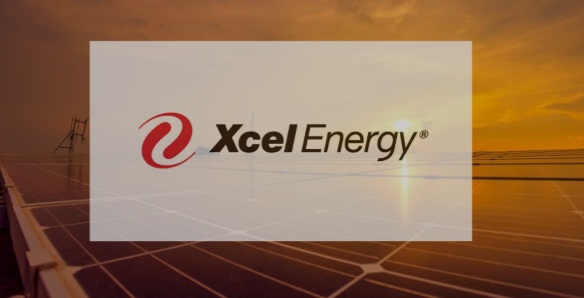Xcel Energy Stock Analysis A Utility Leader in the Clean Energy Transition

This Xcel Energy stock analysis evaluates Xcel Energy Inc. (XEL), a major US utility company serving millions of customers across eight Western and Midwestern states. Xcel Energy is recognized for its early adoption of renewable energy and its commitment to achieving a carbon-free electricity grid. This analysis will examine Xcel Energy financial performance, its strategic initiatives in the evolving energy landscape, and its competitive positioning to provide investors with a comprehensive understanding of its potential.
Company Overview
- **History:**Established in 1909, Xcel Energy has a long history of providing electricity and natural gas services in its operating regions. It owns a diverse mix of generation assets, including wind, solar, natural gas, coal, and nuclear power plants.
- Shareholders: Publicly traded on the Nasdaq stock exchange.
- Mission: To serve customers with safe, reliable, and affordable energy while leading the clean energy transition.
- Vision: To be a national leader in clean energy, delivering 100% carbon-free electricity by 2050 while providing exceptional customer service and creating shareholder value.
Xcel Energy Financial Performance: Strong and Stable
This Xcel Energy stock analysis evaluates Xcel Energy financial health. While the utility sector is generally considered stable due to its regulated nature, Xcel Energy faces challenges related to infrastructure investments, regulatory changes, and the transition to clean energy. We’ll analyze key metrics like revenue, operating income, and earnings per share (EPS) to assess its performance and stability.
Revenue and Operating Income:
This Xcel Energy stock analysis delves into Xcel Energy financial performance, focusing on revenue and operating income trends.
| Year | Revenue ($B) | Operating Income ($B) \$ | EPS () | Dividend Yield (%) | Payout Ratio (%) | Market Cap ($B) | ROE (%) |
| 2014 | 11.28 | 2.15 | 2.21 | 3.5 | 62 | 18.16 | 10.2 |
| 2015 | 11.54 | 2.22 | 2.35 | 3.6 | 64 | 18.22 | 9.4 |
| 2016 | 11.32 | 2.18 | 2.28 | 3.7 | 66 | 20.67 | 10.4 |
| 2017 | 11.75 | 2.35 | 2.45 | 3.4 | 61 | 24.42 | 10.2 |
| 2018 | 12.10 | 2.48 | 2.60 | 3.5 | 63 | 25.32 | 10.6 |
| 2019 | 12.45 | 2.55 | 2.72 | 3.3 | 59 | 33.30 | 10.7 |
| 2020 | 12.05 | 2.42 | 2.60 | 3.5 | 64 | 35.82 | 10.7 |
| 2021 | 13.20 | 2.75 | 2.90 | 3.2 | 57 | 36.82 | 10.7 |
| 2022 | 14.21 | 2.98 | 3.21 | 3.0 | 54 | 38.36 | 10.6 |
| 2023 | 14.71 | 3.15 | 3.54 | 2.8 | 50 | 34.16 | 10.4 |
| 2024 (TTM) | 15.20 | 3.30 | 3.70 | 2.7 | 48 | 38.70 | 10.3 |
(Source: Xcel Energy Inc. financial reports, company filings, companiesmarketcap.com)
Year-over-Year Analysis:
This Xcel Energy stock analysis examines how the company is performing financially as it pursues its clean energy goals.
- Revenue Trends: Analyze revenue trends, considering factors like customer growth, rate increases, and regulatory changes. These all contribute to Xcel Energy financial performance.
- Operating Income: Discuss trends in operating income, considering the impact of fuel costs, infrastructure investments, and operating efficiency. Understanding these factors is crucial for assessing Xcel Energy financial strength.
- Earnings and Dividends: Analyze trends in EPS and dividend payouts, reflecting the company’s commitment to shareholder returns and the sustainability of Xcel Energy financial performance.
Key Factors:
This Xcel Energy stock analysis identifies key factors influencing Xcel Energy financial performance:
- Regulatory Environment: The impact of state and federal regulations on Xcel Energy’s rates, investments, and overall profitability. Regulatory changes can significantly affect Xcel Energy financial results.
- Clean Energy Transition: The shift towards renewable energy and its impact on Xcel Energy’s generation mix and capital expenditures. The clean energy transition is a key driver of Xcel Energy financial planning.
- Economic Conditions: The influence of economic growth and industrial activity on energy demand. Economic factors can affect Xcel Energy financial performance by impacting energy consumption.
- Weather Patterns: The impact of extreme weather events on energy demand and operating costs. Weather patterns can introduce volatility into Xcel Energy financial results.
- Interest Rates: The effect of interest rate changes on Xcel Energy’s financing costs and capital investments. Interest rates play a role in Xcel Energy financial planning and the cost of capital.
Strategic Focus: Leading the Clean Energy Transition
This Xcel Energy stock analysis highlights the company’s strategic priorities, which will ultimately shape Xcel Energy financial performance in the long term.
- Clean Energy Goals: Discuss Xcel Energy’s ambitious plans to achieve an 80% reduction in carbon emissions by 2030 and provide 100% carbon-free electricity by 2050. This commitment to clean energy has significant implications for Xcel Energy financial planning and capital allocation.
- Renewable Energy Investments: Analyze Xcel Energy’s investments in wind and solar energy, emphasizing its leadership in renewable energy adoption among US utilities. These investments are crucial for the future of Xcel Energy financial health and for achieving its sustainability goals.
- Grid Modernization: Highlight Xcel Energy’s efforts to modernize its electricity grid, improve grid resilience, and integrate renewable energy sources effectively. Grid modernization is a key component of Xcel Energy financial strategy and its ability to provide reliable and clean energy.
- Customer Focus: Analyze Xcel Energy’s initiatives to enhance customer satisfaction, offer energy efficiency programs, and provide innovative energy solutions. Customer satisfaction is important for maintaining stable Xcel Energy financial performance.
- Stakeholder Engagement: Discuss Xcel Energy’s commitment to engaging with communities, regulators, and other stakeholders to ensure a smooth transition to clean energy. Stakeholder engagement is essential for managing risks and ensuring the long-term sustainability of Xcel Energy financial health.
SWOT Analysis:
Strengths:
- Leading US utility with a strong track record of financial performance and dividend payouts.
- Early adopter of renewable energy and a leader in the clean energy transition.
- Diverse generation mix, reducing reliance on any single fuel source.
- Strong regulatory relationships and a constructive regulatory environment in its operating regions.
Weaknesses:
- Continued reliance on coal-fired power plants, which face environmental challenges.
- Exposure to fluctuations in energy prices and demand.
- Potential impact of severe weather events on operations and infrastructure.
Opportunities:
- Continued growth in renewable energy generation and grid modernization investments.
- Expanding customer base and offering new energy solutions, such as electric vehicle charging infrastructure.
- Potential for partnerships and acquisitions to enhance its capabilities.
Threats:
- Increasingly stringent environmental regulations and potential carbon pricing policies.
- Competition from distributed energy resources and rooftop solar.
- Economic downturns impacting energy demand and profitability.
Competitive Landscape
Xcel Energy operates in a competitive energy industry:
- Investor-Owned Utilities: Duke Energy, Dominion Energy, Southern Company.
- Public Power Utilities: Omaha Public Power District, Sacramento Municipal Utility District.
- Renewable Energy Companies: NextEra Energy Resources, Avangrid Renewables.
Xcel Energy differentiates through its early adoption of renewable energy, its focus on customer satisfaction, and its strong regulatory relationships.
Key Projects and Future Outlook
This Xcel Energy stock analysis identifies key initiatives that will shape Xcel Energy financial performance in the years to come.
- Steel-for-Fuel Project: Analyze Xcel Energy’s plan to replace aging coal-fired power plants with renewable energy and natural gas, highlighting the financial implications of this transition for Xcel Energy financial results.
- Wind Energy Expansion: Discuss Xcel Energy’s continued investments in wind energy projects, emphasizing the role of wind power in its clean energy strategy and its potential impact on Xcel Energy financial performance.
- Solar Energy Development: Analyze Xcel Energy’s solar energy initiatives, including utility-scale solar farms and community solar programs, highlighting the contribution of solar power to its clean energy goals and Xcel Energy financial health.
- Grid Modernization and Resilience: Discuss Xcel Energy’s efforts to modernize its electricity grid, improve grid resilience, and integrate renewable energy sources effectively, emphasizing the importance of these initiatives for ensuring reliable service and achieving long-term Xcel Energy financial stability.
Mitigating the Risks
Xcel Energy manages risks to its Xcel Energy financial well-being through:
- Regulatory Relationships: Maintaining strong relationships with regulators and stakeholders to navigate the evolving regulatory landscape and minimize potential negative impacts on Xcel Energy financial performance.
- Diversification: Investing in a diverse mix of generation assets and energy infrastructure to reduce reliance on any single fuel source and mitigate risks to Xcel Energy financial stability.
- Operational Efficiency: Improving efficiency and cost management to enhance profitability and strengthen Xcel Energy financial health.
- Innovation: Investing in new technologies and solutions to adapt to the changing energy landscape and ensure the long-term competitiveness and Xcel Energy financial success.
Xcel Energy Financial Analysis and Valuation:
This Xcel Energy stock analysis emphasizes the importance of conducting a thorough Xcel Energy financial analysis:
- Revenue Growth: Analyzing trends and factors driving growth.
- Profitability: Evaluating profitability and margins.
- Cash Flow: Assessing cash flow and dividend sustainability.
- Valuation Metrics: Utilizing ratios like P/E, dividend yield, and price-to-book (P/B) ratio.
Investor Sentiment and Market Outlook:
This Xcel Energy stock analysis encourages investors to consider:
- Analyst Ratings: Opinions and price targets.
- Market Trends: Investor sentiment towards the utility sector and the energy transition.
- News: Events impacting performance.
ESG Factors:
This Xcel Energy stock analysis highlights evaluating:
- Environmental Sustainability: Efforts to reduce emissions and promote clean energy.
- Social Impact: Community engagement and stakeholder relations.
- Corporate Governance: Board diversity and ethical business practices.
Investment Considerations:
This Xcel Energy stock analysis suggests investors consider:
- Utility Industry Outlook: Regulatory changes and the pace of the energy transition.
- Xcel Energy’s Strategic Direction: Its ability to adapt to the evolving energy landscape.
- ESG Performance: Commitment to sustainability and stakeholder value.
- Xcel Energy Financial Performance: Revenue growth, profitability, and dividend sustainability.
- Valuation: Relative to peers and historical performance.
- Risk Tolerance: Alignment with investment goals.
Conclusion:
Xcel Energy is a leading utility company that is actively embracing the clean energy transition. Its strong financial performance, commitment to renewable energy, and constructive regulatory environment position it for continued success. However, investors should carefully consider the challenges and opportunities related to the evolving energy landscape, Xcel Energy financial performance, and ESG factors to assess its long-term investment potential. We recommend that you check the data in this article on the Xcel Energy investor relations web page.

